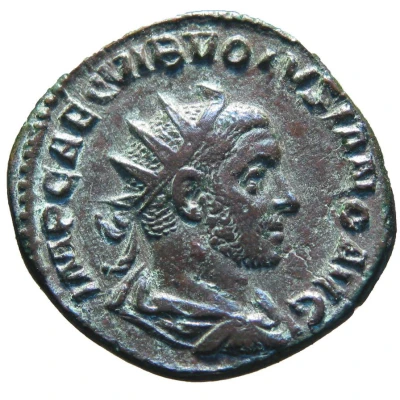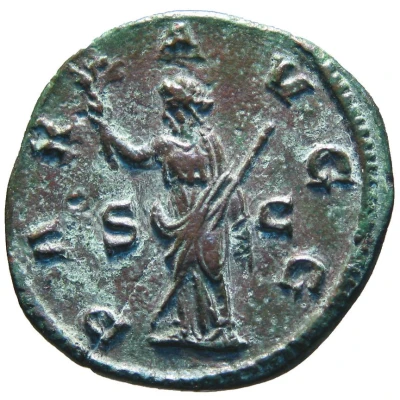


© Trustees of the British Museum
Dupondius - Volusianus PAX AVGG S C; Pax
| Bronze | 10.9 g | - |
| Issuer | Rome › Roman Empire (27 BC - 395 AD) |
|---|---|
| Emperor | Volusianus (Gaius Vibius Volusianus) (251-253) Trebonianus Gallus (Gaius Vibius Afinius Trebonianus Gallus) (251-253) |
| Type | Standard circulation coin |
| Years | 251-253 |
| Value | Dupondius (1⁄16) |
| Currency | Antoninianus, Reform of Caracalla (AD 215 – 301) |
| Composition | Bronze |
| Weight | 10.9 g |
| Shape | Round (irregular) |
| Technique | Hammered |
| Demonetized | Yes |
| Updated | 2024-10-05 |
| Numista | N#284153 |
|---|---|
| Rarity index | 100% |
Reverse
Pax, draped, standing left, holding branch in right hand and transverse sceptre in left hand.
Script: Latin
Lettering: PAX AVGG S C
Translation:
Pax Duorum Augustorum. Senatus Consultum.
Peace of the two emperors (Augusti). Decree of the senate.
Comment
Example of this type:Trustees of the British Museum
Source:
Online Coins of the Roman Empire (OCRE)
Interesting fact
One interesting fact about the Dupondius - Volusianus coin is that it features the goddess Pax (Peace) on the reverse side, which was a common motif during the Roman Empire. The image of Pax was used to promote the idea of peace and stability throughout the empire, and it was often depicted with various symbols such as olive branches, doves, and cornucopias. The coin's design was meant to convey the message that the Roman Empire was a place of peace and prosperity, and it was a powerful symbol of the empire's values and ideals.